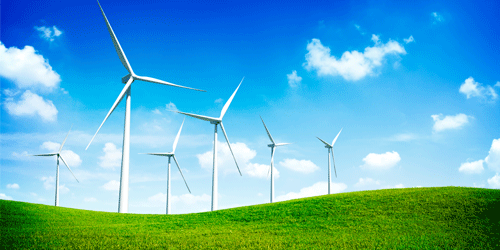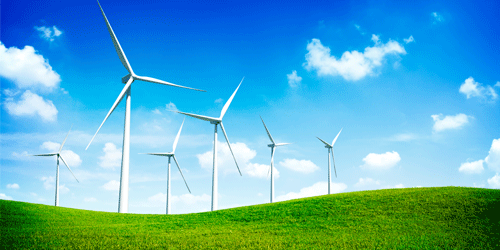Gusts in the Wind
A wind turbine is at the mercy of the volatile atmosphere. The constant changes in wind speed lead to power fluctuations that can destabilize the electrical grid. New work explains observed wind power fluctuations within a turbulence theory, showing how power blips can be partly smoothed out by combining the output from multiple turbines across large distances. The results could be used in deciding on a strategy for stabilizing the grid with a mix of energy sources.
The wind changes from minute to minute and hour to hour, but generally speaking, the longer the time separation, , the greater the wind-speed change. This time dependence is due to correlated motion inside turbulent air masses called eddies. Turbulence models predict that the distribution, or spectrum, of wind-speed variations is proportional to . Data from single wind turbines show the same dependence in their power fluctuations, but this dependence has never been fully explained.
Mahesh Bandi from the Okinawa Institute of Science and Technology in Japan has derived the wind power spectrum from a basic turbulence theory. He found that the largest eddies (roughly 100 km wide) have a strong influence on the power fluctuations, even at short time scales. The correlated motions within these large eddies explain why a multiturbine farm spanning a 10-km-wide region exhibits roughly the same dependence as a single turbine. To smooth out—or reduce—the fluctuations at short time scales, one needs to combine the power from wind farms separated by distances greater than 100 km. However, Bandi showed that the amount of smoothing is limited: the best one can do is a fluctuation spectrum that varies as , as observed for grids in Ireland and Texas.
This research is published in Physical Review Letters.
–Michael Schirber
Michael Schirber is a Corresponding Editor for Physics based in Lyon, France.





